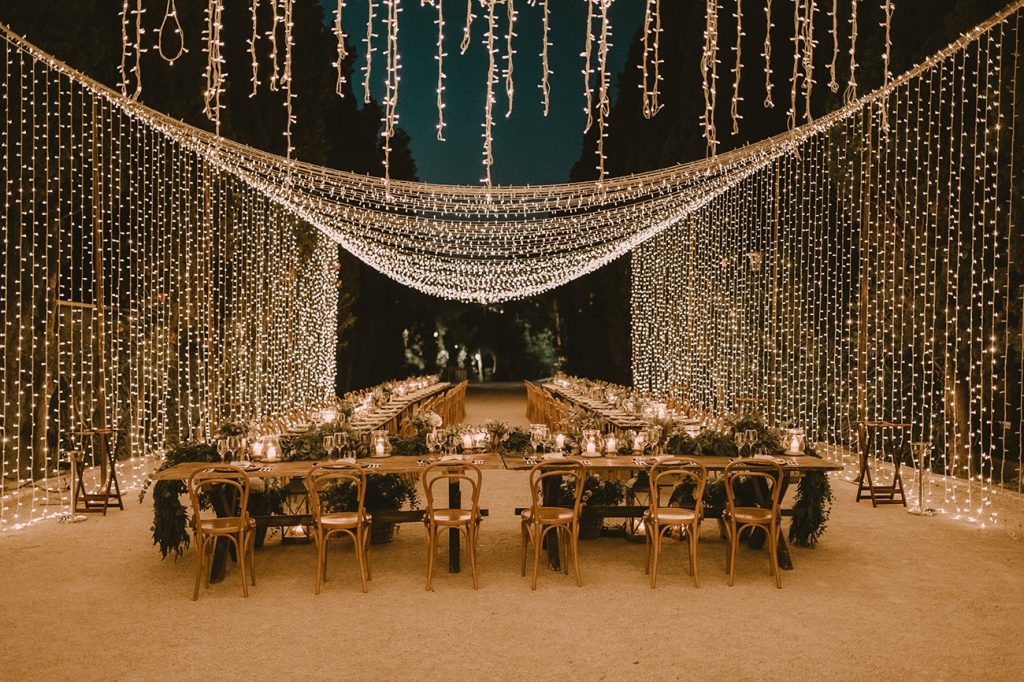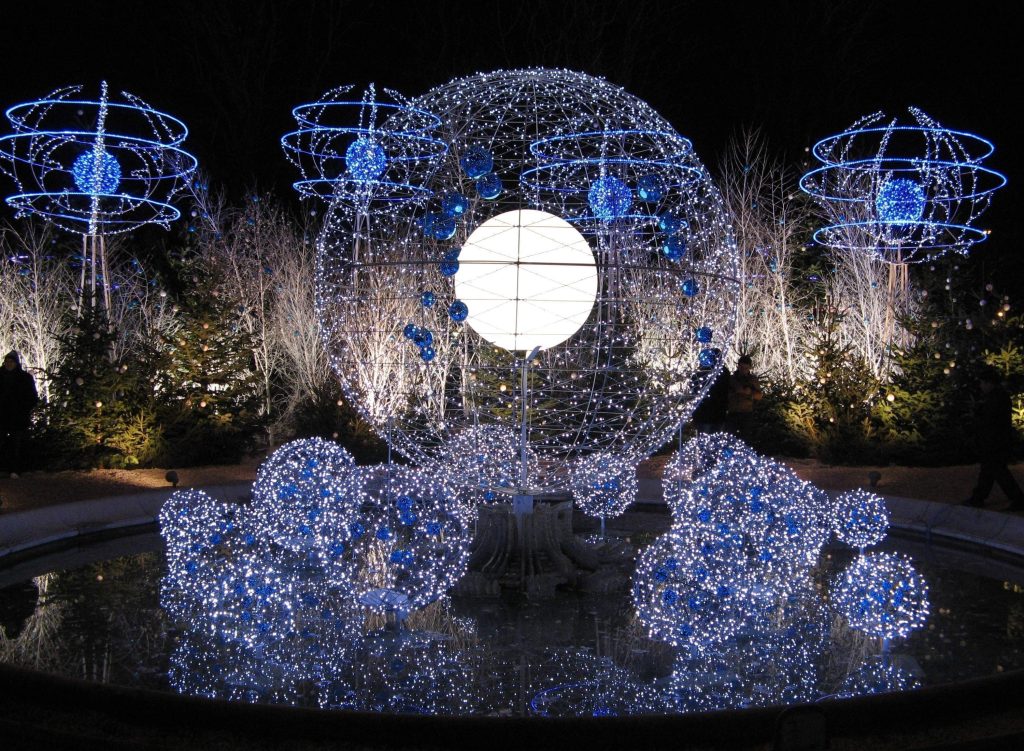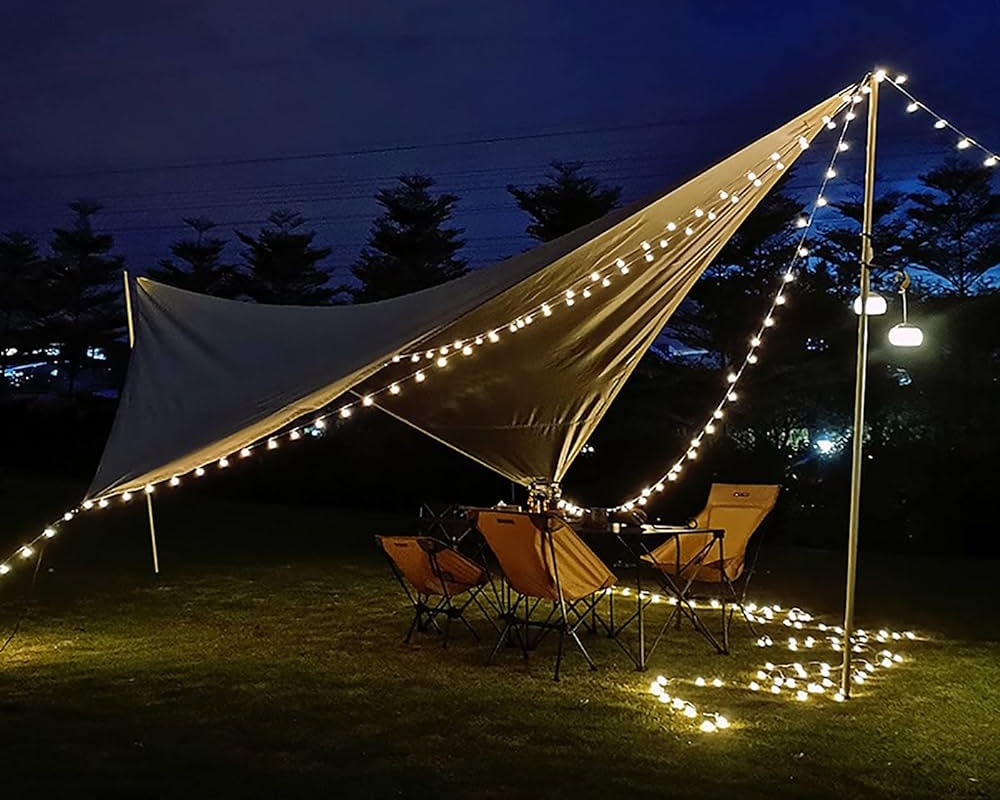Determine String Lights Length: How Many Feet Do You Need?
Lighting Spaces: An Introduction to String Lights
String lights, popularly known as fairy lights, have evolved from their traditional role as festive or Christmas decor to becoming a staple aspect of lighting design in various settings. These versatile decorative features are often used to create an atmospheric ambiance, add a pop of color, or simply provide soft lighting in indoor and outdoor spaces.
From being draped around Christmas trees and wrapped around bedposts to outlining garden paths as landscape lighting and enlivening party venues, the applications of string lights are limited only by one’s imagination. A fascinating facet about string lights is their universal appeal and versatility.
They can transform mundane spaces into magical landscapes with just the flick of a switch. Particularly popular are landscape string lights, which offer an easy yet effective method to create interesting visual elements after dusk.
By utilizing these flexible strands of light creatively, it is possible to highlight specific aspects of your landscape, like trees or water features, illuminate pathways for safety, or simply add a warm glow to your outdoor living areas. However whimsical they may seem, though, integrating string lights into your decor requires precise calculation and planning.
The key lies in measuring accurately the number of feet you need for the intended space without compromising on the aesthetic appeal. Too few might not adequately cover your desired area, while too many could lead to cluttered brightness that defeats their purpose.
Capturing Magic in Measurements: The Importance of Accurate Calculations
Many people underestimate the significance of proper measurement when installing string lights – often ending up with fewer or excess strings than they actually require. This absence of careful premeditation can turn what should be an enchanting addition into an aesthetic faux pas that fails to achieve its intended purpose.
The purchase starts with understanding where exactly you want your string lights: Is it around a cozy corner indoors? Or do you envision them enhancing your yard as elegant landscape lighting? Consider not just the length but also the breadth of the area to assess overall surface coverage. Next, consider the density of lights you prefer.

A high density gives a brighter and more festive look, often suitable for occasional events like parties or weddings. On the other hand, a low density with wider spacing between bulbs creates a subtler and more romantic atmosphere – perfect for everyday home or landscape string lights that create a warm and relaxed ambiance.
Additionally, when planning your lighting layout, remember to account for possible power sources – you don’t want to calculate perfectly just to realize your strings can’t quite reach your outlets! Be sure to include this in your measurement process as well.
Always measure with some flexibility in mind. Unexpected corners or design elements might require extra footage – it is always better to have slightly more than falling short. Remember: planning is half the battle won while creating dreamy spaces with string lights. So measure twice and light up once!
Understanding the Luminescence: A Closer Look at String Lights
String lights, also frequently referred to as fairy lights, consist of a series of small bulb lights strategically affixed along a flexible wire. They’ve evolved significantly from their initial inception, with variations designed to accommodate a wide array of purposes and aesthetic preferences. This post will explore some of the popular types available today: fairy lights, globe lights, LED string lights, and rope lights.
Fairy Lights: The Dainty Lighting
Fairy lights are well-loved for their delicate and ethereal glow. They’re often used indoors due to their subtle radiance being best suited for creating intimate atmospheres. These string lights typically feature tiny LED bulbs encased in thin and flexible wire that’s easily manipulated into various shapes or wrapped around objects.

For those desiring to incorporate landscape lighting into their home or event design, fairy lights provide an unobtrusive yet elegant option. Their warm light can create an inviting atmosphere in any room or highlight specific architectural features within a landscape when used outdoors.
In terms of length, fairy lights usually come in strips ranging from 16 feet to 33 feet but can extend up to 200 feet for larger projects. These lengths allow them the flexibility needed to adapt across different landscapes and decorations.
Globe Lights: The Bold Dazzlers
Globe string lights are characterized by their larger spherical bulbs, which emit a bolder glow compared to fairy lights; they make for striking visual elements whether strung indoors or used as landscape string lights outdoors. Suffused with vintage charm, these adornments elegantly brighten gardens, patios, or dining areas while adding aesthetic appeal.
Regardless of where they’re strung up – a backyard, a wedding reception, or even along the streets of a festive market – globe lights are proven scene-stealers and add an inviting ambiance to any setting. They’re typically available in lengths ranging from 25 feet to 100 feet and often have connectable ends for those needing additional length.
LED String Lights: The Efficient Glowers
LED string lights are increasingly becoming the preferred choice for many due to their energy efficiency and longevity. They’re similar to fairy lights in size but differ in terms of their superior brightness and lower power consumption. They come in various colors, allowing users more freedom with design aesthetics.
These lights are equally effective indoors as well as outdoors. When used as landscape string lights, they efficiently brighten up spaces while adding an enchanting sparkle. Lengths generally vary from 20 feet for smaller decorations up to 66 feet or more for larger spaces or occasions.
Rope Lights: The Flexible Shimmers
Rope lights consist of small LED bulbs encased within clear PVC tubing, which renders them flexible yet durable. Their robust construction makes them suited for both indoor uses and tougher outdoor conditions, where they can serve as ideal landscape lighting.

This type of lighting is often used for outlining pathways, decks, or staircases due to its ability to conform easily around corners and curves. Rope lights commonly come in lengths between 10 feet and an impressive 150 feet, catering effectively to differing lighting needs.
Choosing between these types of string lights largely depends on the desired aesthetic effect, location, and purpose of your lighting project. Familiarizing yourself with these common varieties will aid you immensely when deciding how many feet you need!
Determining the Need: Factors to Consider when Measuring for String Lights
Shedding Light on Purpose: Decoration and Beyond
String lights have become a perennial favorite for both functional lighting and aesthetic enhancement. They are no longer limited to holiday decorations but have extended their charm to various occasions – from grand nuptials and festive parties, all the way to intimate gatherings.
The ethereal glow they emit adds a romantic aura that subtly transforms ordinary spaces into enchanting ones. Beyond events, string lights also magically enhance our homes’ interiors.
Draped around mirrors in bedrooms or swagged across living rooms, they make these private spaces cozier and more inviting. In this domestic context, it is essential to measure accurately so as not to overpower the room with excessive lighting or underserve it with sparse lighting.
Moreover, these versatile lights have found their place in the realm of landscape lighting too. Gardens, decks, or patios adorned with landscape string lights exude an inviting ambiance perfect for quiet relaxation or lively outdoor entertaining.
Focal Points: The Area or Object to be Decorated
The area or object you intend to decorate significantly influences the length of string lights needed. For instance, if you wish to wrap them around a tree trunk or run them along your garden fence line, meticulous measurement is key not only for visual symmetry but also for power consumption efficiency.
Practical Steps to Measure for String Lights
The Art of Measuring Spaces and Objects
Determining how much string light you need begins with physical measurement. For room decoration where you plan on draping the lights in swags across ceilings or walls, consider not only the length but also factoring in some extra feet for an attractive sagging effect between attachment points.
Measuring outdoor areas can be a bit trickier, especially for landscape string lights. You may need to navigate around trees, shrubs, or architectural structures. In such cases, using a flexible measuring tape or a piece of string can be immensely helpful.
When it comes to wrapping objects like Christmas trees, remember to measure not just the height but also the circumference at various levels for a uniformly lit effect.
Calculating the Required Length of String Lights
Numbers and Necessities: Formulas and Calculations
Once you have your measurements, you might want to add extra length depending on how densely you want your lights to be packed. For instance, if you prefer a profusion of lights on your Christmas tree or an intensively lit garden path with landscape string lights, consider multiplying your measurement by 1.5 or 2 to get the required length.
Another aspect that often gets overlooked is power source proximity and cord length. Unless you’re using battery-operated lights, ensure that your light strings can comfortably reach power outlets without stretching tautly across walkways or living spaces.
Tips and Tricks when Buying String Lights
Extra Insights: From Extra Lengths to Bulb Spaces
Always go for some bonus footage when purchasing string lights, as this provides flexibility in design and ensures leeway for any unexpected needs. Also note that the space between bulbs affects overall luminosity and hence should figure into your measurements. Wider-spaced bulbs often provide lesser intensity of light compared with their closely spaced counterparts.

The decision between connectable or standalone strings largely depends on your specific requirements – connectable ones offer greater length coverage, but standalone ones afford simpler installation without worrying about maximum connectable wattage limitations. Remember these insights next time you venture out shopping for those magical strands of brilliance!
Safety Measures when Installing String Lights
Lights and Safety: Handling and Electrical Precautions
While string lights may seem simple and harmless, improper handling or installation can pose significant risks. Always ensure that you follow the manufacturer’s guidelines for installation. Avoid overloading outlets, which can lead to overheating or even fire hazards. Outdoor installations need special attention as they are exposed to the elements – opt for weatherproof lights and sockets.
Conclusion: How Many Feet of String Lights Do We Need?
Mastering the art of string light decoration is not just about aesthetics but also involves precise measurements, smart purchasing decisions, and safety considerations. With the information compiled in this post, you’re well on your way to lighting your spaces magically while maintaining safety protocols. So go ahead! Unleash the magic of luminous dreams into your reality with those twinkling strings of delight. After all, a little light goes a long way in creating lasting memories!
You may also be interested in the following posts:
